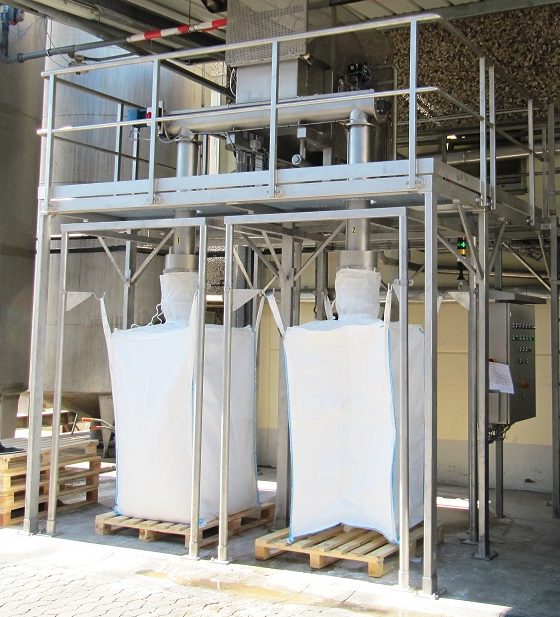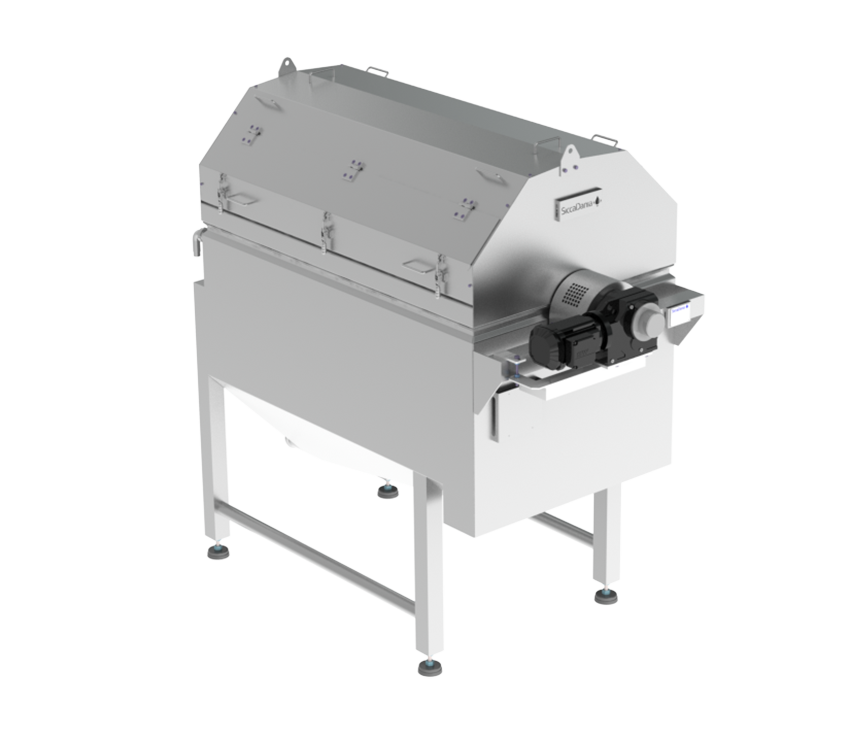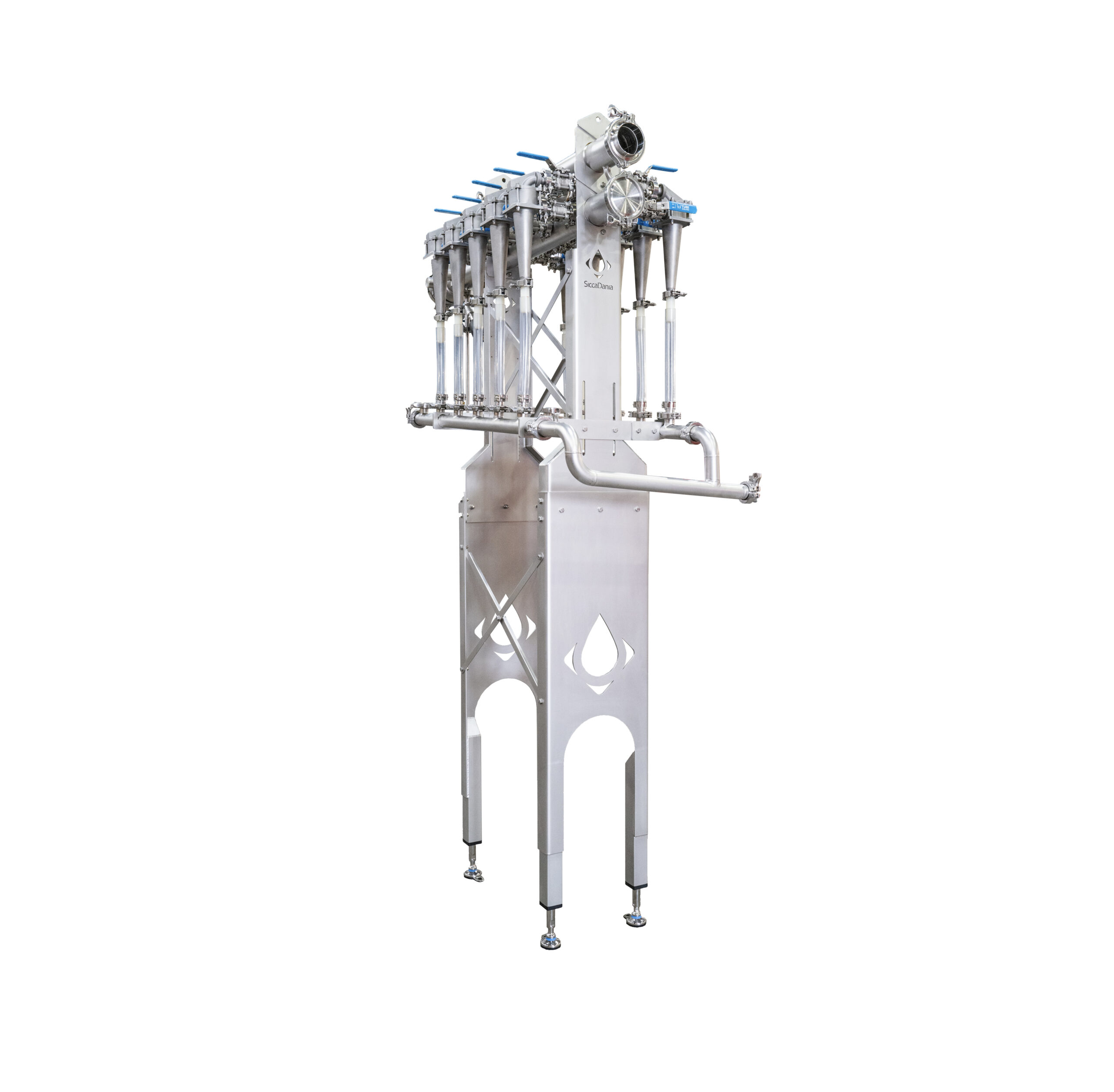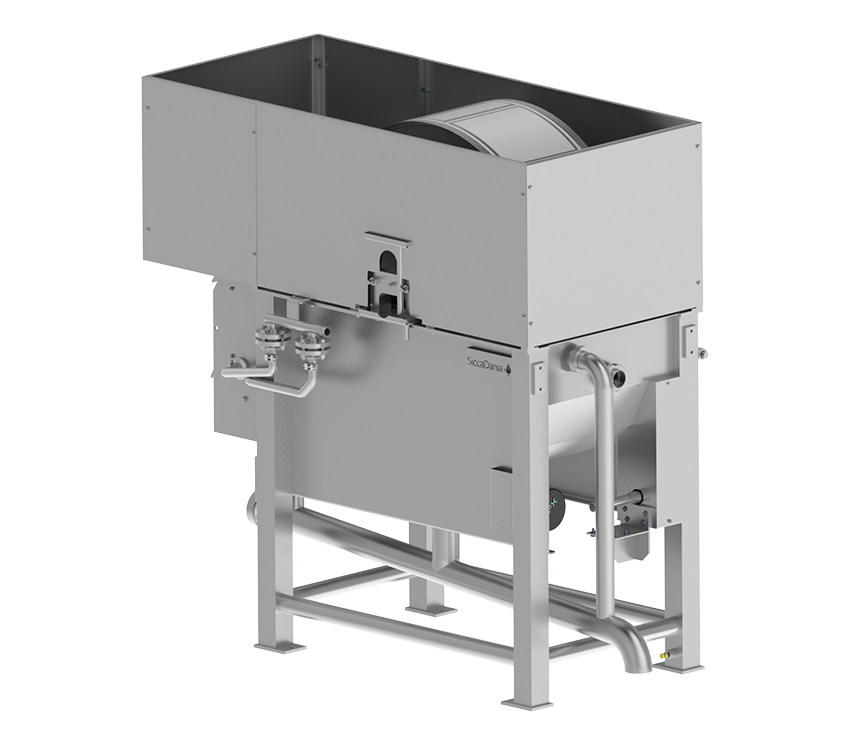Maximising your yield while minimising waste
SiccaDania offers a variety of screening equipment for wet and dry processes. The scope comprises safety screens, screens suitable for pre-screening, classification, and general separation.
The starch processing industry focuses on the reduction of water consumption by reducing the cost of fresh water and waste-water disposal. By separating the starch from the cutting water and flume water, the life of the water can be extended, and the costs for waste-water treatment are reduced considerably. An additional advantage of starch recovery is the value the recovered starch has as a commodity.
Major benefits can be achieved by making the treating water reusable in the production process. This can be achieved by removing the solids and the starch in particular from the water.
- Minimum freshwater intake
- Maximum reduction of wastewater load (COD/BOD)
- No additional water consumption
- Minimum cleaning time of processing lines
- Full integration in the line
- Continuous and automatic operation
- Robust, safe, and hygienic construction matches the high standards maintained by the foodstuff industry
- Low operational and maintenance costs
The SiccaDania Starch Recovery

Creating an efficient and effective recovery system
Process description
With a growing focus on full valorization and zero-waste production, it has become even more important to process side streams that arise during food production. At our SiccaDania location in Veendam, The Netherlands we provide solutions for starch recovery in potato processing plants. This article gives an insight into this unique concept.
During the production of French fries, crisps and potato flakes the potatoes are fed to a hydro cutting system where they pass through a cutting grid/knife. The potatoes can be cut in various sizes, for example, small fries, wedges or slices. During this cutting process, starch, potato pieces and fibres are released into the cutting water system. The cut potatoes are washed to clean them from starch and other particles.
After the cutting process, the fluid with starch, coarse particles and fibres enters a cutting water tank. The SiccaDania Recovery System will be connected to the cutting water tank. From this tank, the fluid is pumped into a refining sieve. This sieve ensures that all coarse particles are removed from the water. The coarse particles can be used as, for example, animal feed.
The starch-rich water is then fed to a hydro cyclone unit. These cyclones separate the starch from the water by centrifugal force. The water virtually free of starch can be re-used in the production line, for example for potato cutting, cleaning or de-stoning. The concentrated starch slurry leaves the hydro cyclones to the next stage in the recovery system.
For further dewatering of the starch, there are three options.
- The first option is de-watering via a special truck container. This option is only feasible when the starch processor is located near the potato processing plant, due to the limited shelf life of the relative moisture in starch.
- The second option is de-watering via a vacuum filter. In larger production facilities this is the most common option. Under the vacuum filter, there is a screw conveyor in place, which distributes the starch into a double big bag station.
- The third option is often applied in smaller production facilities, which is de-watering directly into special drainage big bags.
With a starch recovery system, our customers benefit from a significant reduction of COD load, which saves costs on wastewater treatment. The freshwater usage will decrease too since process water free of starch can be reused in the processing line. Last but not least, the collected starch is a valuable commodity that can be sold to starch processors who use it for countless applications.
Design
SiccaDania offers custom-made systems fit for any process water volume. Depending on the requirements it is possible to create a complete turn-key setup or individual technologies which can be installed in existing production. The systems are self-cleaning and require minimal attention and maintenance.
Get in touch with our Starch Recovery Systems Sales Team


Rolf Vos
All Starch Recovery Systems

Jan Reinders
All Starch Recovery SystemsWant to learn more?
Do not hesitate to contact our experts. They can help you optimise your starch production.
Contact




